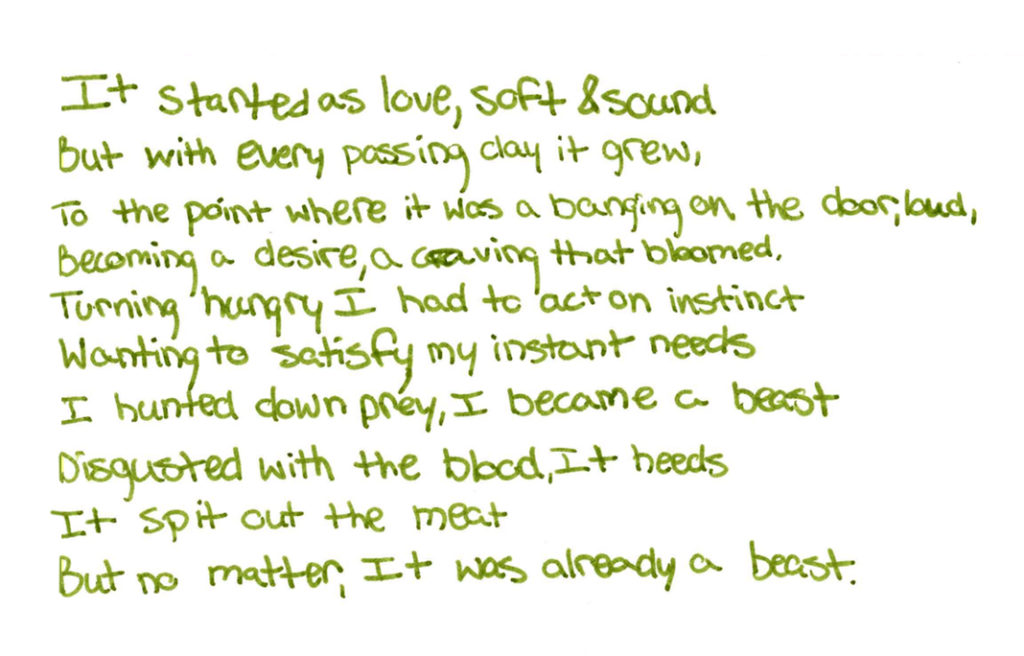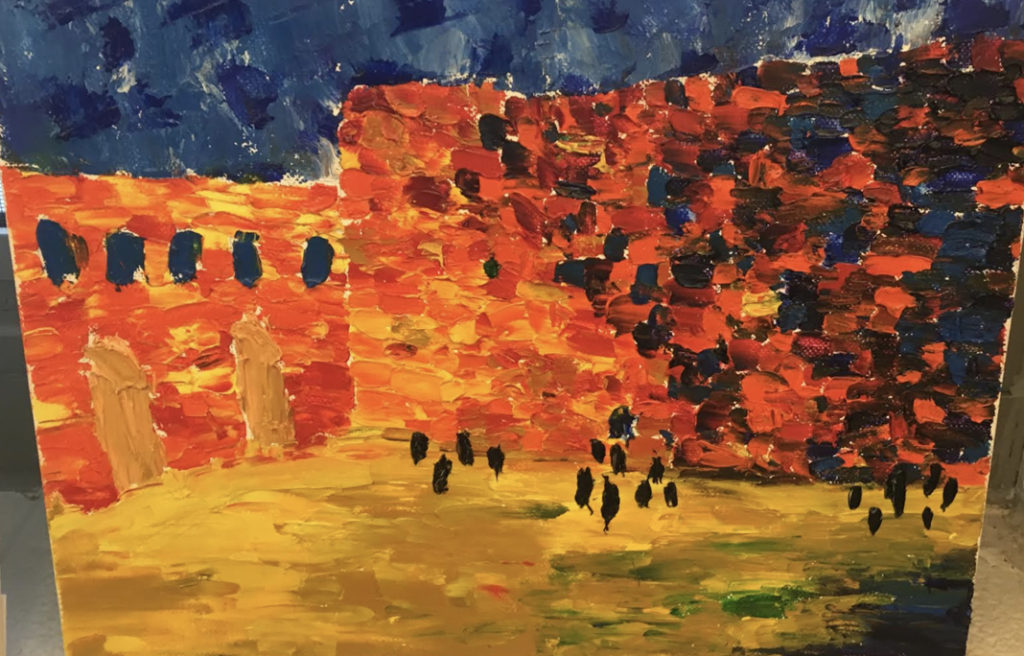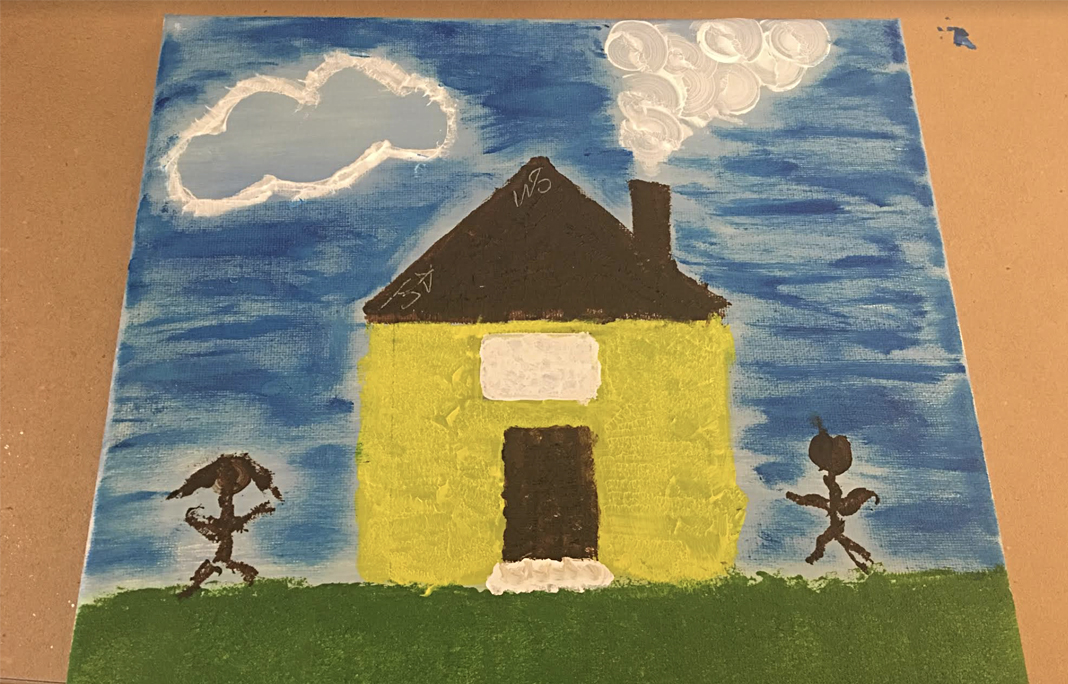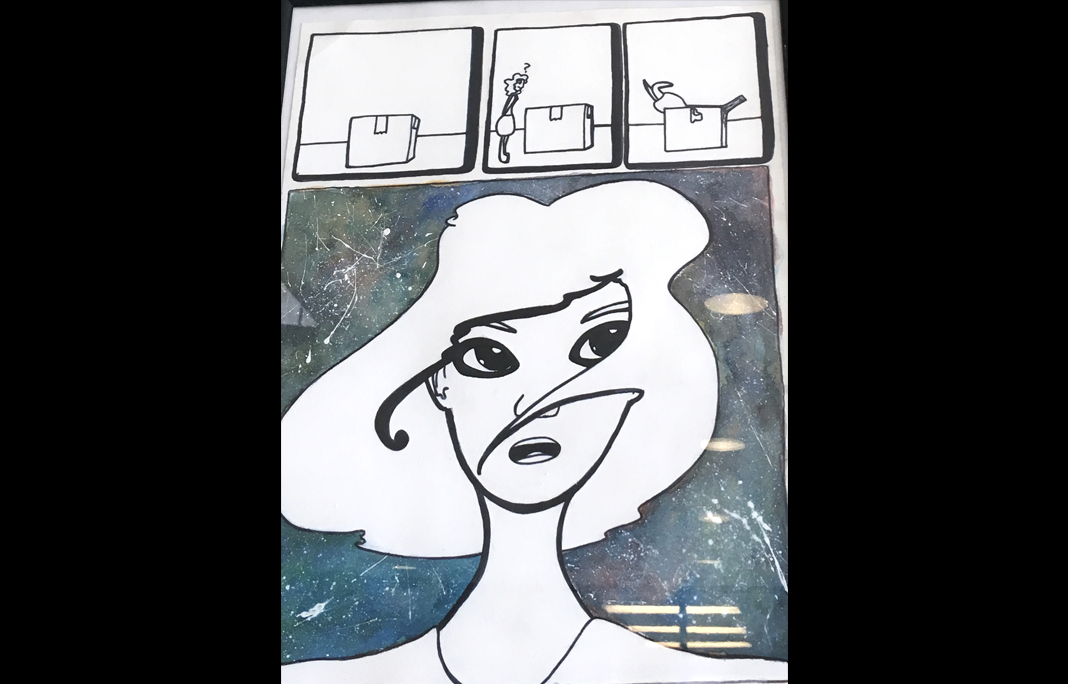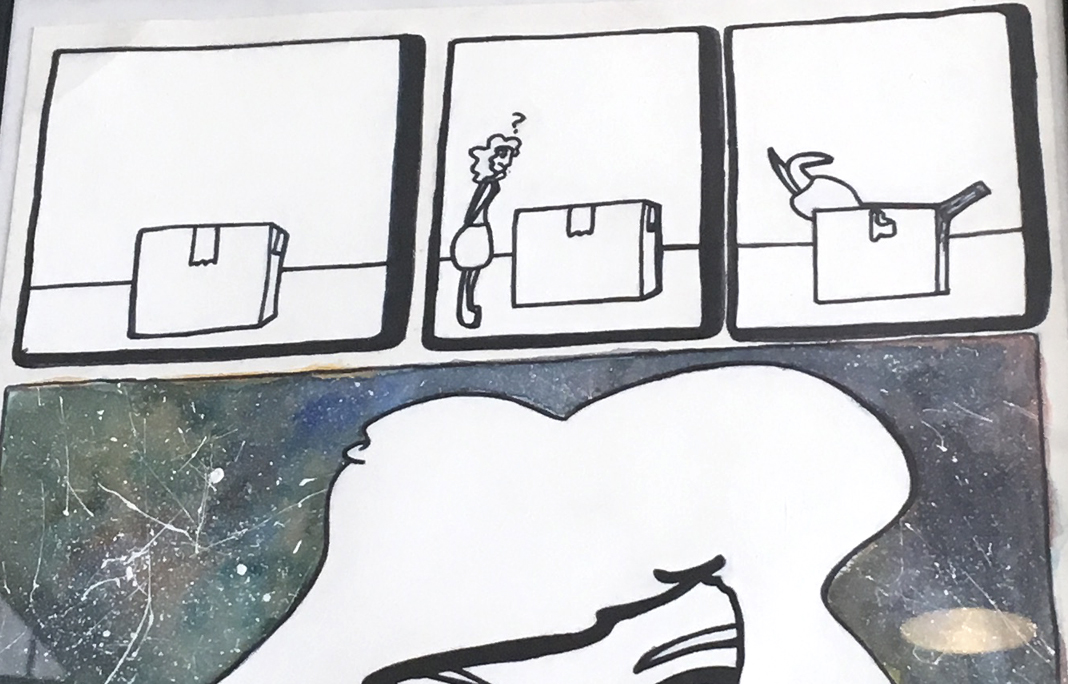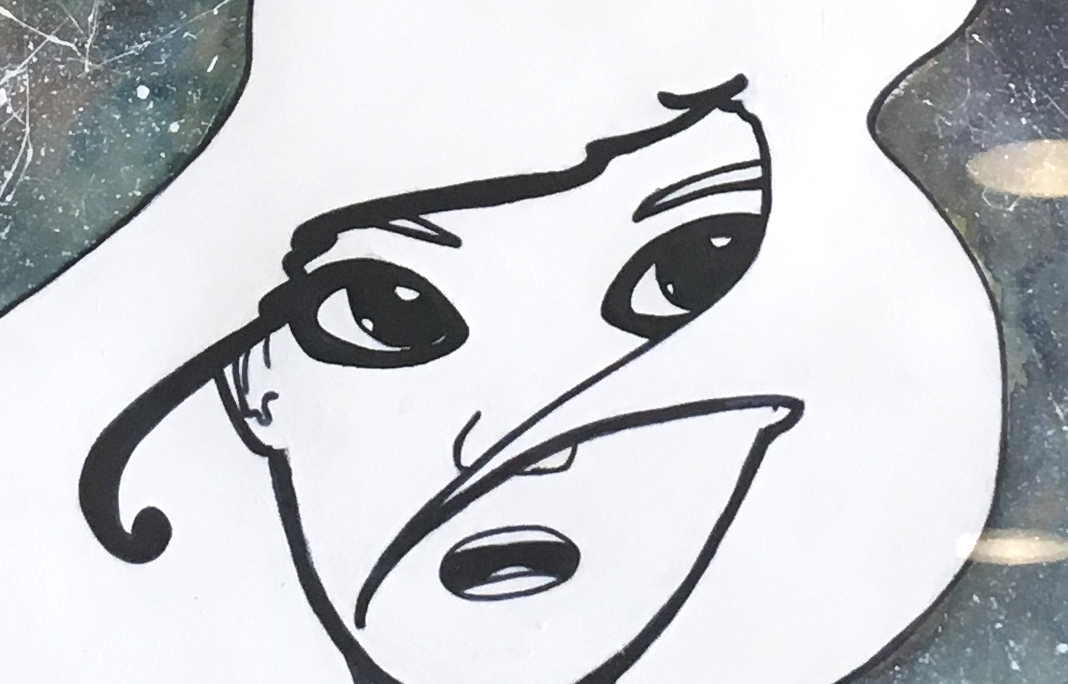Judaism through the Prism of the Arts
I designed and taught "Judaism through the Prism of the Arts,” a course for upper classmen at Fuchs Mizrachi High School. (The course is featured in the video on my homepage).
This course is structured around different Jewish “middot” (values), particularly those pertaining to the middah of love. After analyzing various Jewish sources, students created works of art that represented the middot expressed in these sources. They also wrote an artist's statement to accompany their work.
One of the Jewish texts we analyzed was the evocative story recorded in Shmuel 2, chapter 13. This story is about the rape of Tamar by her half brother, Amnon. The Tanach records the emotional state of Amnon after he raped his sister in the following verse:
| 15: And Amnon hated her with very great hatred, for greater was the hatred with which he hated her than the love with which he had loved her. And Amnon said to her, "Get up (and) go." (translated from chabad.org) | טו וַיִּשְׂנָאֶ֣הָ אַמְנ֗וֹן שִׂנְאָה֙ גְּדוֹלָ֣ה מְאֹ֔ד כִּ֣י גְדוֹלָ֗ה הַשִּׂנְאָה֙ אֲשֶׁ֣ר שְׂנֵאָ֔הּ מֵאַהֲבָ֖ה אֲשֶׁ֣ר אֲהֵבָ֑הּ וַֽיֹּאמֶר־לָ֥הּ אַמְנ֖וֹן ק֥וּמִי לֵֽכִי |
As a way to generate contemplation on what it means to love or hate as intensely as Amnon did in this one verse, I asked the students to create something that represented their understanding of either intense hate or intense love. Here are two examples of student work.
The second assignment was to create a work of art that represented the students’ understanding of the sources that we learned under the category of “Love between man and fellow man.” Here is an example of student art and an essay which demonstrates the student's understanding of the sources.
House Painting
S.M
Assignment on Ahava
April 12, 2018
House Painting
In my Kebtuba drawing, I drew a picture of a cartoon house with a man and a woman on either side. Every aspect of this painting is textured . The grass is grainy, the house is spiky, the smoke is swirly, and the sky is imperfect. This texture shows what a real marriage is like. There will be rough patches and sacrifice, but together, it makes a beautiful picture. There are two people, standing together in front of their imperfect house with an imperfect landscape, but it is perfectly imperfect. The people are still happy with their life, despite the imperfections. This idea, that marriage is not perfect but it is still amazing, is perfect for a Ketuba. The man and the woman are not agreeing to be perfect, but they are agreeing to be perfectly happy in their imperfect lives as long as they are together. In the ketuba, there is no obligation to give your wife a flawless life. However, the Ketuba does say, “I will work honor, feed, and support you in the custom of Jewish men”. The man must promise to do the best he can, and make sacrifices for his wife, but nowhere does he promise to make it an easy life. They are agreeing to an imperfect marriage, and that is the beautiful thing. When you get married, you are promising to give your partner all of your love, as it says in Vayikra יט :יח, “love your fellow as yourself”. As long as you love your wife and sacrifice for her, all the imperfections will seem very minor in the big picture. As Rambam says on the Mishnah Torah Perek 6, loving one’s fellow man means to “speak in his praise, and to care for his money, just as he cares for his own money…” Everything that this man is promising to do for himself, he should do for others, especially his wife. Even if it takes some sacrifice, if he loves his wife, it is something he is willing to undergo. It might not be the perfect life he dreamed of. But, he will have a wife and a family full of love, and to me that is perfect.
The final assessment on this unit was of the students’ understanding of the sources that we learned under the category of “Love between man and God.” An example of student work for this assessment is the painting of a girl and the students’ explanation.
Radical Amazement
G.K
8 January 2017
Assignment on Radical Amazement
“As civilization advances, the sense of wonder declines. Such decline is an alarming symptom of our state of mind. Mankind will not perish for want of information; but only for want of appreciation. The beginning of our happiness lies in the understanding that life without wonder is not worth living. What we lack is not a will to believe, but a will to wonder” - Abraham Joshua Heschel
My art piece attempts to show this idea. In the first frame, there is a box. The box symbolizes simple, seemingly clear-cut things, the kinds of things people often take for granted. Things like the laws of nature, the human brain, and the universe in general. Most people don’t think about and question those things, but if they did, they would be amazed by what they find. The universe is pretty freaking cool. Which is what the girl in the art piece found out, simply by being curious, by wondering. We should be like her, we should start pondering questions and ideas, we should wonder. The reward for this of course, is noticing just how amazing average, everyday things can be.
